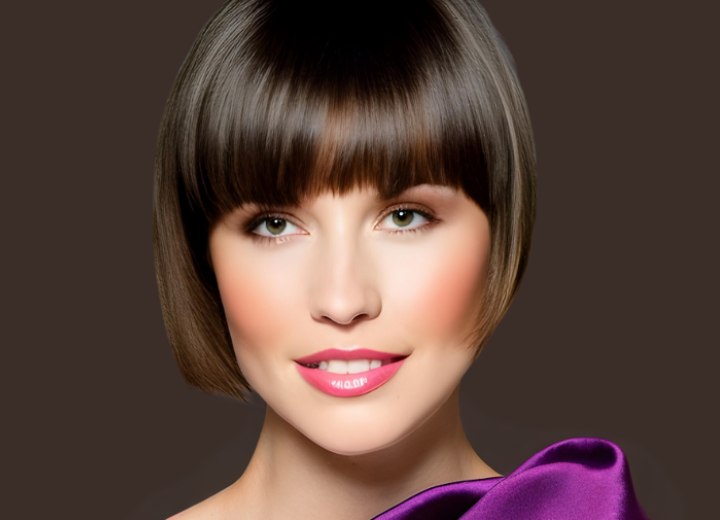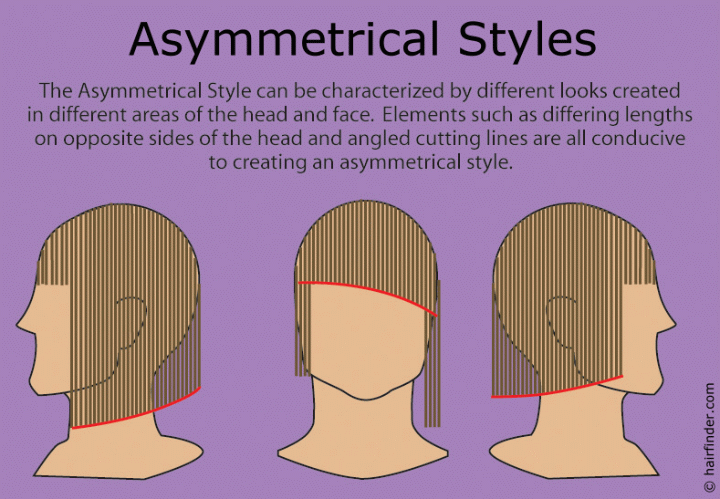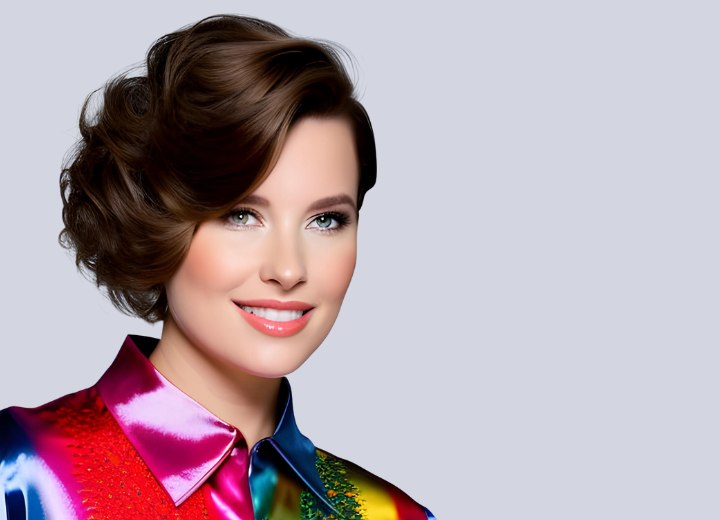Asymmetrical Hairstyles

What are Asymmetrical Styles?
An asymmetrical style is simply a style that isn't the same on both sides. Or specifically one that follows an "unbalanced" pattern. Back in the 1980s, when short hair was very popular with some women, artists like Cyndi Lauper made some very bold hairstyle choices. Her hair was buzz cut almost to the bare scalp on one side of her head with the other side allowed to grow very long and layered in choppy locks. The top was styled to be spiky and gradually increased in length to blend the two sides.
And the asymmetry doesn’t even have to completely encompass the head. You can create an asymmetrical element to your hairstyle by using a diagonal cutting line in the bangs area, or growing the bangs/fringe of your hair exceptionally long while the rest of the hair is short.

Who are Asymmetrical Styles suited for?
Many people are drawn to wearing more asymmetrical styles because they want to make a statement with their hair. They are very outgoing and like to draw a lot of attention to themselves, particularly when it comes to their hair. You usually find asymmetrical styles among younger people, especially those into less mainstream interests.
But that isn't to say that other people shouldn't wear asymmetrical styles. In fact, incorporating asymmetrical elements into a hairstyle can help to flatter the face and balance otherwise unbalanced features. For example, someone who has a large or overly protrusive nose may find their face flattered by using an angled parting and a diagonally cut bangs area.


Are Asymmetrical Styles Harder to Create?
Asymmetrical styles can be more difficult to create, but only in the sense that usually an asymmetrical style is a combination of two different styles. One side may be a classic A-line bob, while the other side may be a gamine-short pixie cut. The difficulty can be in blending the two styles together to create a new cohesive-looking whole. There is also the matter of selecting two separate styles that will work well together and look appropriate when combined.
I don't know that I would advocate merging a buzz cut with a long-layering technique, although, depending on the lengths involved, there may be styles that would work well.
©Hairfinder.com
